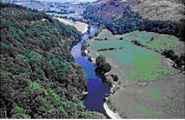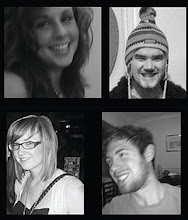We decided to target singles ages 30-50 year olds after much debate. We chose this because its a large upcoming market in which there are lots of possible events that could be held at the the park that cater for this niche target market. The target markets user needs would be to find a love or a soul mate via the datign service but continue to use the park as a place to meet each week or month by having events going on. The target markets, product needs would consist of buying products for each other as well as personal use. The target markets geographic location is fairly local, therefore in all areas of yorkshire, people travel far and wide on dating websites. The target markets demographic and lifestyles are single, widow or divorced, may have a family or not it would depend on the circumstances in which they are single, socialising with friends, working, going to the gym and much more. would be local to all areas of yorkshire
Nowadays dating is online on such websites as http://uk.match.com/, and http://www.eharmony.co.uk/. We feel this is less personal, by bringing dating to the the yorkshire sculpture park we feel it can make a difference to people and they can finally meet their match in person and the 21st century dating experience.
Taken from Blackboard
Group D: Ties of Community
Type D25: Town Centre Refuge
Sociology and Environment
Summary
Town Centre Refuge contains young unattached people who live in small flats above shops or in the less prestigious side streets bordering the centres of small market towns and declining seaside resorts.
Demography
Whereas the central areas of larger cities are mostly surrounded by rows of Victorian terraces or council flats, the areas separating the commercial districts of smaller towns and seaside resorts are more likely to consist of small rented flats and big old houses many of which have fallen into multiple occupation. Particularly in declining seaside resorts, Town Centre Refuge is comprised of young adults on low incomes and divorced people, with significant minorities living in hostels and in shared accommodation. Though many of these people were born in the town, such neighbourhoods are likely to accommodate people from surrounding middle class communities who, for one reason or another, can’t or prefer not to engage in mainstream consumerist lifestyles. Town Centre Refuge is in certain locations, accommodation of last resort attracting an aimless population many of whom drift in and out of employment. Particularly where they are located by the coast (though not in inland market towns) such neighbourhoods are also often selected as locations for accommodating asylum seekers and may acquire a reputation among local residents for drugs and prostitution, despite the fact that many of them border on areas of good quality housing. Transient lifestyles lead to higher levels of crime than in the more suburban areas of smaller towns and many perpetrators are petty criminals living locally. It is in these areas that noise is often cited as a source of environmental nuisance. The population of Town Centre Refuge is mostly made up of young single people, a large number of whom are still in their late teens and many more in their twenties, most in partnerships of varying degrees of durability. There are fewer people in older working groups but often a substantial number of very elderly people accommodated in the larger houses that have been converted by local authorities to provide sheltered accommodation for those on lower incomes. Catering for the needs of weekenders and summer tourists is the major source of employment in seaside resorts whilst in inland centres many young people serve in local shops. Levels of unemployment are well above the national average and relatively few people own a car.
Environment
Town Centre Refuge neighbourhoods consist mostly of older buildings on the edge of commercial areas, mostly tall terraces with three or more storeys, many with shops or commercial premises on the ground floor. Some big old houses might once have accommodated families staying by the seaside. Few houses have gardens, and streets are cluttered with cars parked by shoppers and commuters. In between the houses there are small car parks where local business people park their cars during office hours or small yards used for delivering merchandise to local shops. In many cases local councils have pulled down the more dilapidated properties and replaced them with small blocks of social housing suitable for people without families. Most of the accommodation takes the form of small, rented flats few of which have been improved and some of which may have difficulty meeting the modern fire safety requirements. Front doors tend to lead directly onto pavements that are often in need of repair, which lead quickly to major thoroughfares and to the shops, offices and hotels that occupy the town centre. Whilst many of these areas are in poor repair, there are instances where, as a result of some interesting features, local councils have taken decisions to invest in comprehensive regeneration. An increasing number of these neighbourhoods are now scoring sufficiently highly on central government indicators of deprivation to attract funds for neighbourhood renewal.
Economy
Town Centre Refuge, whilst occurring in small towns throughout the country, tends to be particularly concentrated in towns such as Hastings, Torquay and Rhyl, which have suffered from the drop in day and summer visitors and where the decline at the lower end of the tourist market has not been compensated for, by growing numbers of retirees. Many of these towns now suffer from serious levels of unemployment and from low wage levels and a distinctive feature of these neighbourhoods is the large number of people, many of them young, who are in poor health. However catering for visitors and the retired population provides many opportunities for the self-employed.
Consumer Values
Town Centre Refuge accommodates a varied population with many different values. Nevertheless there is a significant minority who do not engage with mainstream social values. Many of these are people with no particular sense of direction whilst others live in these neighbourhoods because of their tolerance of counter cultural attitudes. Constituencies with large numbers of these neighbourhoods have recorded particularly high swings away from the Conservatives at recent general elections.
Consumption Patterns
Town Centre Refuge represents a relatively unattractive market to most products traded in the formal economy. The single people in small flats purchase groceries locally in small pack sizes and spend significant amounts of their low incomes on alcohol and cigarettes, on video rentals, music and at clubs and bars.
Change
In an increasingly fragmented society, where more and more people live on their own, these neighbourhoods will continue to play an important role in accommodating people who, for whatever reason, have difficulty fitting into conventional lifestyle stereotypes. Outside large cities there are relatively few other locations in which people of this sort can settle and feel accepted.
Group F: Welfare Borderline
Type F38: Tower Block Living
Sociology and Environment
Summary
Tower Block Living contains areas where the majority of the population live in high rise flats and suffer from very high levels of social and economic deprivation.
Demography
More than half of Tower Block Living live in high rise flats. These are particularly deprived neighbourhoods, with large numbers of people suffering form long term sickness and/or unemployment. Very few have any formal qualifications and only a small minority are able to afford a car. Most people are council tenants, mostly living in run down city neighbourhoods which in previous times gave employment to large numbers of artisans in factories, foundries and engineering works.
Tower Block Living is especially common in the poorer parts of Glasgow and is also common in the centres of large provincial English cities such as Manchester, Leeds, Newcastle, Liverpool and Nottingham, where councils have been particularly vigorous in rebuilding inner city neighbourhoods. By contrast, London has few Tower Block Living neighbourhoods. Many of these tower blocks may at one time have accommodated families with children but today these blocks have mostly be turned over to people without children. Many young people between the ages of 18 and 30 have been given tenancies in these blocks. Most of these young people do not have children but, once children do arrive, families are typically moved out once the children reach school age or are joined by younger siblings. These flats are also occupied by large numbers of older single people who have been divorced.
Many suffer from various types of deprivation and for many, this type of housing provides something akin to sheltered accommodation. Many of the young people are likely to be involved with drugs or to have been in trouble with the law. Few are capable to maintaining long term relationships whether with partners or with employers.
The decline in manual employment in local workshops and small factories is a major difficulty for these people, few of whom have the skills to work in occupations which require tactful dealings with private customers. Many drift in and out of employment in low wage, fringe jobs in hotels and catering. Unlike inner London council estates, these tower blocks mostly accommodate poor whites. However, in some there is an increasing minority of residents of Caribbean descent.
Environment
Neighbourhoods of Tower Block Living are often characterised by mass production ‘system’ built architecture which was intended to allow high rise estates to be erected more rapidly and at lower cost. Though these promises were mostly met, many of these towers have subsequently suffered from unanticipated problems of damp and decaying concrete which have often involved councils in major investments in refurbishment. The interior arrangements often left much to be desired and many resident groups have successfully campaigned for improvements in security that leave common areas more secure against unauthorised access than before. In some areas the towers add welcome relief to low rise architecture whilst in others they have been erected in a series which creates an impersonal environment which is seldom adequately compensated for by effective landscaping. Often there is conflict between the objective of softening the concrete towers through the planting of bushes, security, which favours clear visibility, the interests of local children for areas in which to play ball games and the interests of older residents for common areas not to be used as children’s playgrounds. Unfortunately many of these estates lack residents with the energy to mobilise residents’ opinions which makes it difficult for local housing managers to build effective dialogues with local people. Overall the environment is one in which it is difficult for residents to keep secure any property that they can not lock up within their cramped homes and this seriously limits the range of leisure activities that they can engage in.
Particularly in the larger estates, low incomes and vandalism make it difficult for local retailers to survive which results in residents relying on infrequent buses to reach shops selling a wider variety of merchandise than everyday essentials.
Economy
Neighbourhoods of Tower Block Living often have very low levels of engagement with their local economies. A key feature of these areas is the very low proportion of people who own their own businesses.
Consumer Values
Tower Block Living constitutes a population at the lowest rung of the Maslow hierarchy for whom day to day survival is a challenge in its own right and where little consideration is given to purchases other than basic necessities. People spend much of their time watching commercial television but lead lives which are largely unaffected by the adverts that they see.
Consumption Patterns
Tower Block Living provides a poor market for virtually all products traded in the formal economy. These are particularly poor markets for financial services organisations since most people have no savings nor do they have the security against which to borrow. It is only pawnbrokers and sellers of second hand furniture and televisions who appear to thrive in these areas.
Change
Some of these neighbourhoods are likely to be improved as a result of refurbishment. Others are likely to be demolished to make way for more individual, low rise accommodation.






















 Following in the footsteps the reality TV show, I’m a Celebrity, I’m a singletonbrings together 20 single professionals, 10 single guys, and 10 single girls for a weekend of fun and adventure. Staying in a log cabin over the course of a weekend, the group is faced with a number of challenging, fun and unique activities, ranging from the cerebral to the physical, that are specifically designed to bring out the best of all participants. They guarantee you don’t have to be a first class athlete to take part! Singletons have the opportunity to get to know all members of the group through various challenges and activities over the weekend, guaranteeing that by the end of it you will know everyone very well, and at the very least, leave with lots of friends, and who knows what else!
Following in the footsteps the reality TV show, I’m a Celebrity, I’m a singletonbrings together 20 single professionals, 10 single guys, and 10 single girls for a weekend of fun and adventure. Staying in a log cabin over the course of a weekend, the group is faced with a number of challenging, fun and unique activities, ranging from the cerebral to the physical, that are specifically designed to bring out the best of all participants. They guarantee you don’t have to be a first class athlete to take part! Singletons have the opportunity to get to know all members of the group through various challenges and activities over the weekend, guaranteeing that by the end of it you will know everyone very well, and at the very least, leave with lots of friends, and who knows what else! I’m a singleton organizes weekends in various parts of the UK for single girls and guys all over the country. One of their locations, is a log cabin nestled in the heart of the Forest of Dean by the England / Wales border on the edge of the River Wye, which consists of male and female sleeping areas, showers, a kitchen and a large communal lounge.
I’m a singleton organizes weekends in various parts of the UK for single girls and guys all over the country. One of their locations, is a log cabin nestled in the heart of the Forest of Dean by the England / Wales border on the edge of the River Wye, which consists of male and female sleeping areas, showers, a kitchen and a large communal lounge. Without giving too much away and taking out the fun and surprise of the weekend, we will give you a brief overview of what happens on the weekend.
Without giving too much away and taking out the fun and surprise of the weekend, we will give you a brief overview of what happens on the weekend.
















